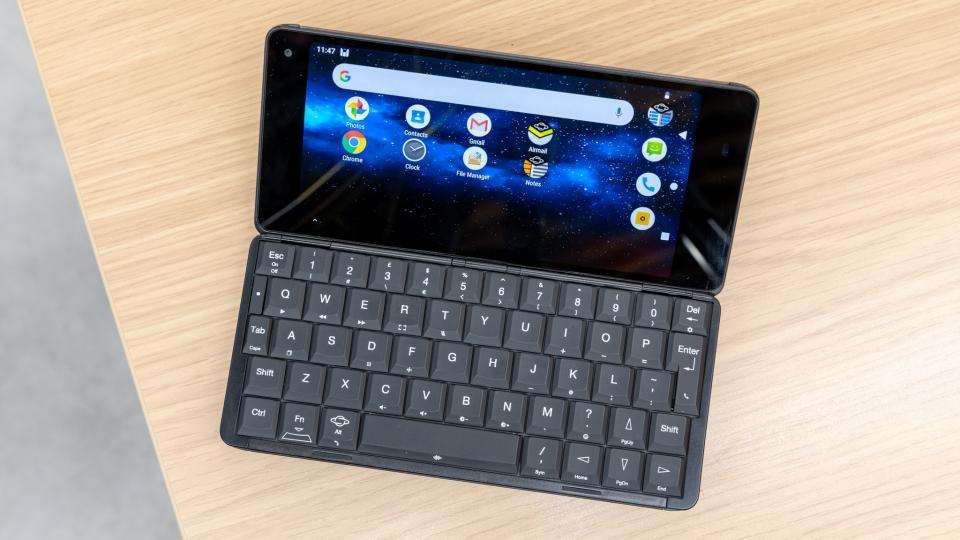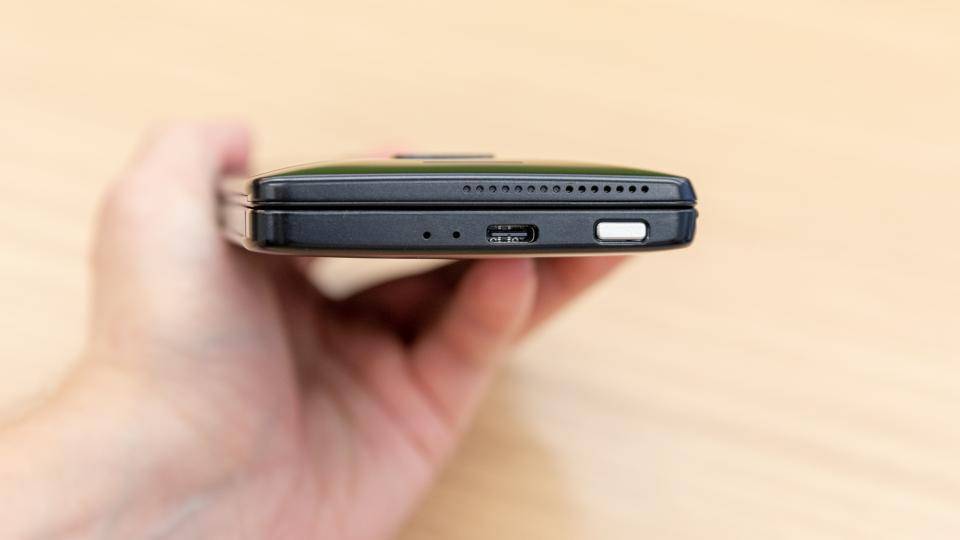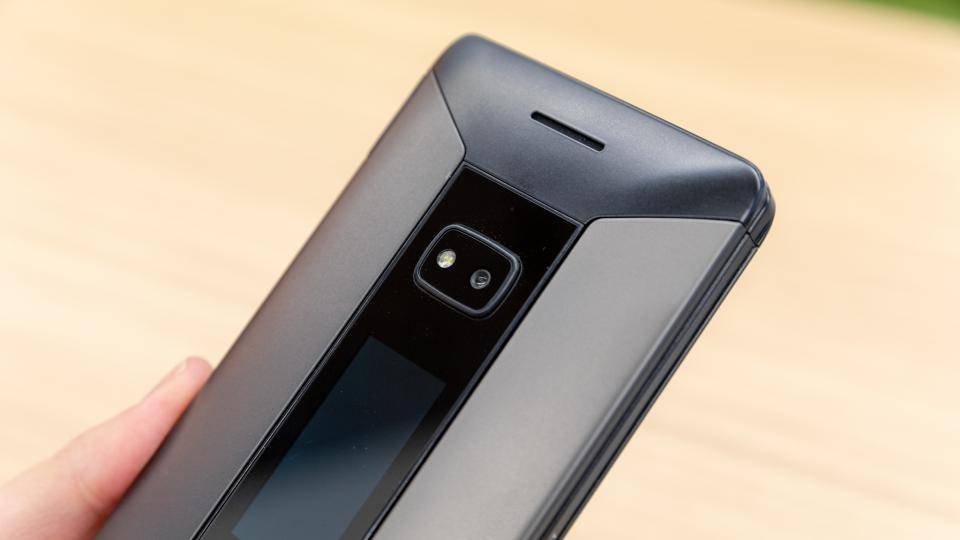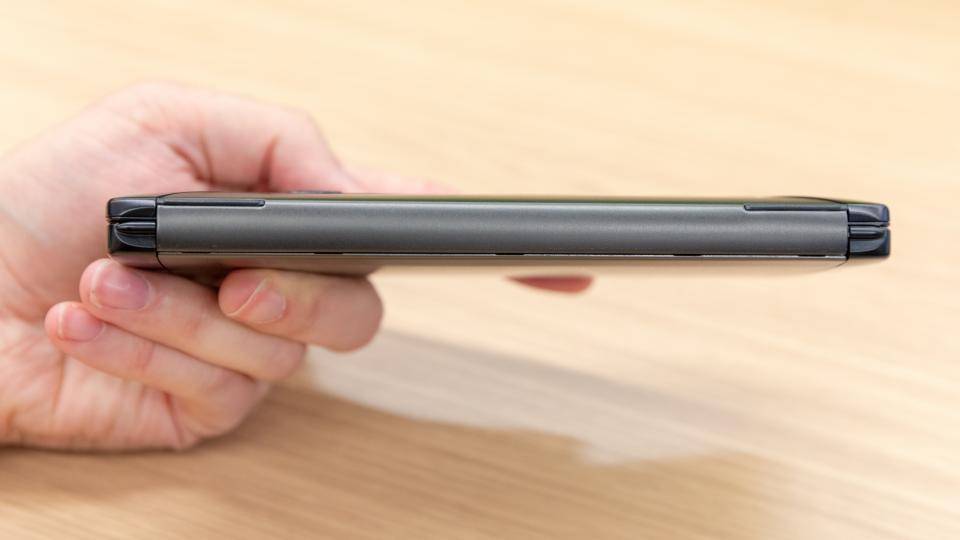The Cosmo Communicator is a curious thing. In an age of sleek smartphones and excellent Swype-style software you may wonder what the point of it is at all. Well, keep your snorts of derision at bay for the moment. Yes, this is a device with niche appeal, but it’s also strangely brilliant. If it matches your needs, it could replace your phone, your laptop and your tablet when you're travelling.
Buy now from Planet
Sceptical? You’re right to be and, as you’ll see in this review, the Cosmo Communicator has many niggles. But there’s also much to celebrate in this UK-designed machine.
The Cosmo Communicator isn’t the first of its kind. This is actually the successor to the Gemini PDA, which I reviewed back in April 2018. The Gemini borrowed heavily from the Psion 5 series of PDAs, right down to the original designer Martin Riddiford helping Planet Computers (the makers of the Cosmo and Gemini) recreate that original, brilliant keyboard.
Cosmo Communicator review: Key features
While the Gemini PDA wasn’t designed to replace your phone, however, the Cosmo Communicator is. This time there’s a secondary OLED screen on the front, a fingerprint reader and a 24-megapixel camera. The keyboard now benefits from an adjustable backlight, too.
The most important change is the front panel. This operates separately from the main Android system – it even has its own processor – but hooks into the OS so that you don’t need to, for example, dismiss a notification twice.

On the whole, Planet Computers’ technicians have done an excellent job of providing all the functions you need access to on such a tiny panel. It’s detailed enough to make the first few lines of emails readable, for instance, so you can take the decision whether to reply or not without opening up the device. If you do press Reply, when you open the Cosmo the email client will be sitting there waiting for you.
Once you get used to the activation buttons – “OK” sits to the left of the fingerprint reader, “Back” to the right – it becomes intuitive to navigate the menu system, too. You even get colour coding to assist. For example, if a call comes through then a green LED lights up next to the OK button and a red one appears on the Back button. Press green and you can start talking.
The screen provides notifications too. There’s signal strength for Wi-Fi and your phone network, date and time, a battery indicator and icons to show if a message has come through, whether that’s Twitter, text or email. Click on the icon to read what it has to say. In essence, it acts as a triage service, so you can make a decision on whether or not to respond.

You can make a call direct from the front screen, too. If you’re precise enough with your fingers, you can manually plug in the number, but it’s easier to go through your recent call history or address book, both of which are a button press away.
Inevitably, there are a couple of annoyances. The first is that it’s so easy to accidentally activate something when you’re putting the Cosmo into your pocket: I once slipped it into Flight mode without realising. I soon trained myself to press the silver on/smart button before shoving it in my pocket, as that switches the front screen off.

The mini screen’s processor is also too slow to do anything demanding. For instance, in theory you can use it to frame shots using the 24-megapixel camera. However, it lags behind by about a second, reminding me of the early generations of digital cameras with passive matrix screens.
The final annoyance, and I’m hoping this is an early bug that can be squished, is that the phone app sometimes sends the audio to the wrong earpiece (it works in both orientations), so you end up hurriedly turning it the other way round to hear what people are saying. Note that you can only adjust volume by pressing the keyboard shortcuts, too. Those irritations aside, making calls is absolutely fine on the Cosmo. You just look a bit of a 1980s doofus putting something so bulky against your ear. Which brings us to the topic of size, and there’s no hiding from the fact that the Cosmo is bulky. In fact, there’s not much chance of hiding it at all: whether you put it into a trouser or jacket pocket, you and your companions will notice its presence. That’s inevitable with something that is both twice the depth and weight of a normal phone.
Buy now from Planet
Cosmo Communicator review: Design and ports
Physically, the chassis is almost identical to the Gemini PDA. Planet Computers has tweaked the hinge to improve its reliability and stability, while it’s now much easier to add a SIM. Whereas previously you needed to remove part of the top lid via a supplied tool, now it uses an ejectable SIM drawer. You can use this to add a second SIM or a microSD card, and note that the Cosmo supports eSIMs, too. World travellers will also appreciate that it supports all the US bands, unlike the Gemini.
There are two USB-C slots, one on either side. You can use the left one to charge it quickly, for attaching a single peripheral, adding Ethernet, or hooking up a USB-C hub (Planet recommends its own for £45). The right port can be for outputting to HDMI via a converter, or for attaching a peripheral.

That’s an incredibly versatile set of ports for a phone – and yes, there’s a 3.5mm audio jack too – but the Cosmo has the capability to operate as a full-blown PC thanks to its support for Debian Linux. Having said that, the installation process involves jumping many hurdles and some original Gemini buyers have been disappointed by the lack of updates and support for its Debian implementation. This is an area where the relatively small installed base of the Gemini/Cosmo becomes evident.
I was critical of the original Gemini PDA’s mechanical keyboard. It wasn’t simply that it lacked the tactile feel of the original on the Series 5, but that it suffered from frustrating problems that slowed down my typing and caused errors. While the Cosmo still hasn’t reached the insanely brilliant heights of the Psion, I’m pleased to say that it’s a big improvement.
The biggest jump forward in quality is the responsiveness of the spacebar. Previously, you had to hit it precisely right to avoid either the dreaded double space or the yet more annoying not-being-recognised-at-all. Nothing stops the flow of words quite like needing to correct mistakes every five seconds. Inevitably, you won’t hit the same typing speed as on a full-size keyboard, but it’s possible to reach high, error-free rates.
At this point, you may be questioning the point of a physical keyboard. As I said right at the top, it isn’t for everyone, but there’s a reason why almost 4,000 people backed the Cosmo on Indiegogo (and why over 10,000 Gemini PDAs have been shipped to date).
There’s an active Gemini community in a Facebook group, so I asked members why they preferred a physical keyboard. There were common themes: hating onscreen keyboards, having a full screen to work with (this makes a big difference when using Word, for instance), making notes in meetings without looking at your phone, cursor key navigation in spreadsheets. One user (thanks Kevin!) also pointed out how useful it was in emulators, “especially 8-bit machines that never supported touch”. Other uses included clinical notation, inserting special characters and coding.
While it’s true that many of those examples would be even better served by an iPad and a keyboard – it’s much trickier to slip an iPad into your jeans pocket. If you just want to carry one device, and love the idea of a physical keyboard, your options are limited. Fundamentally, only you will know if you find this form factor of value.
To take advantage of the keyboard, Planet supplies a few interesting apps. The one with immediate appeal to Psion lovers is Agenda, which provides the Year-at-a-glance view that many people grew to love. It syncs perfectly with Google Calendar, too.
There’s a Data app that you can use to create new apps on the device, or to import data from other sources. Planet Computers also offers its own email app, dubbed Airmail, but Gmail works just as well with the keyboard. Finally, there’s Notes. Nothing to do with Lotus, this is for quickly tapping in notes or recording them by voice.
READ NEXT: Best laptops
Before you buy, bear in mind that the mobile world is tuned for portrait screens, not landscape. Many apps simply aren’t usable in landscape, yet that’s the default view as Android knows you’re viewing sideways on. This is when you need to resort to the “force rotate” option or turn the Cosmo awkwardly into portrait view.
Another niggle is that the Cosmo isn’t great at switching between Wi-Fi networks. During my testing, I often moved between my “home” and “office” networks, and I frequently had to force it to recognise the correct option (despite choosing the auto recognise option in Android 9).
Cosmo Communicator review: Performance and battery life
The Cosmo has enjoyed a speed bump over the Gemini PDA, as the graph below reveals. That boost comes courtesy of the MediaTek P70 chipset, which features four “big” 2GHz Cortex A73 cores and four “small” 2GHz A53 cores. It’s a midrange offering but that’s fine: Android 9 ran smoothly during testing, and while the gaming results show that it will never rival the flagships, it’s quick enough for most.
Battery life is more important, and is something heavy users should be wary of. Planet includes the same 4,220mAh battery that it supplied in the Gemini, and while that’s enormous for a standard phone, it’s merely sufficient for a device that you could use all day. To give an idea of real-world usage, I’ve been tapping away for two hours now and it’s dropped from 80% to 58%. That’s with the screen at two-thirds brightness.
I suspect that Planet’s power-management skills aren’t quite up to the standards of the likes of Huawei and Samsung either, because over the course of my week with the Cosmo it needed charging every night – and sometimes a quick top-up during the day. I also tested it using our video rundown test, where it lasted for a lowly 10hrs 38mins.
One bit of good news is that Planet Computers has designed the battery to be replaceable; this is meant to be a device with a lifespan of years, rather than months. But if you send the Cosmo to Planet Computers they will replace the battery for you – for $79. You’ll need to look after the Cosmo if you want it to last: while it can cope with light rain, it isn’t water-resistant, so beware coffee spills and don’t use it near a swimming pool.
Cosmo Communicator review: Display and camera
One thing hasn’t changed: the screen. It’s a 6in IPS display that doesn’t quite sit in the middle of the frame, with a 2,160 x 1,080 resolution. I would call it Championship quality, helped along by a top brightness of 558cd/m2. It covers 87.6% of the sRGB gamut and has a Delta E of 2.39, where most top-end phones are near 100% and under one. It’s fine, but won’t blow you away.
The same applies to the external camera. This is a huge upgrade on the Gemini, principally because it didn’t have one – you either needed to use the mediocre 5-megapixel internal camera or buy a camera add-on. Neither was satisfactory. Here, though, you’re getting a camera that can take decent images.
Keep your expectations realistic, however. There’s nothing fancy such as optical zoom or video stabilisation, and the controls are limited to HDR on/off... and that’s about it. Zoom into images and you can expect plenty of compression. Still, it’s capable of taking snaps and, as long as you don’t zoom in too much, they’re fine.
Cosmo Communicator review: Verdict
The Cosmo is being shipped to backers on Indiegogo, where it costs $750. That translates into around £580. Soon, however, it will only be available to buy via the Planet Computers website – and will cost £799 inc VAT. That’s a meaty sum. Despite this, the Cosmo is well worth buying if it hits all your buttons. It’s a more rounded product than the Gemini PDA and may be enough to persuade you to leave your laptop at home or in the office.
Buy now from Planet

